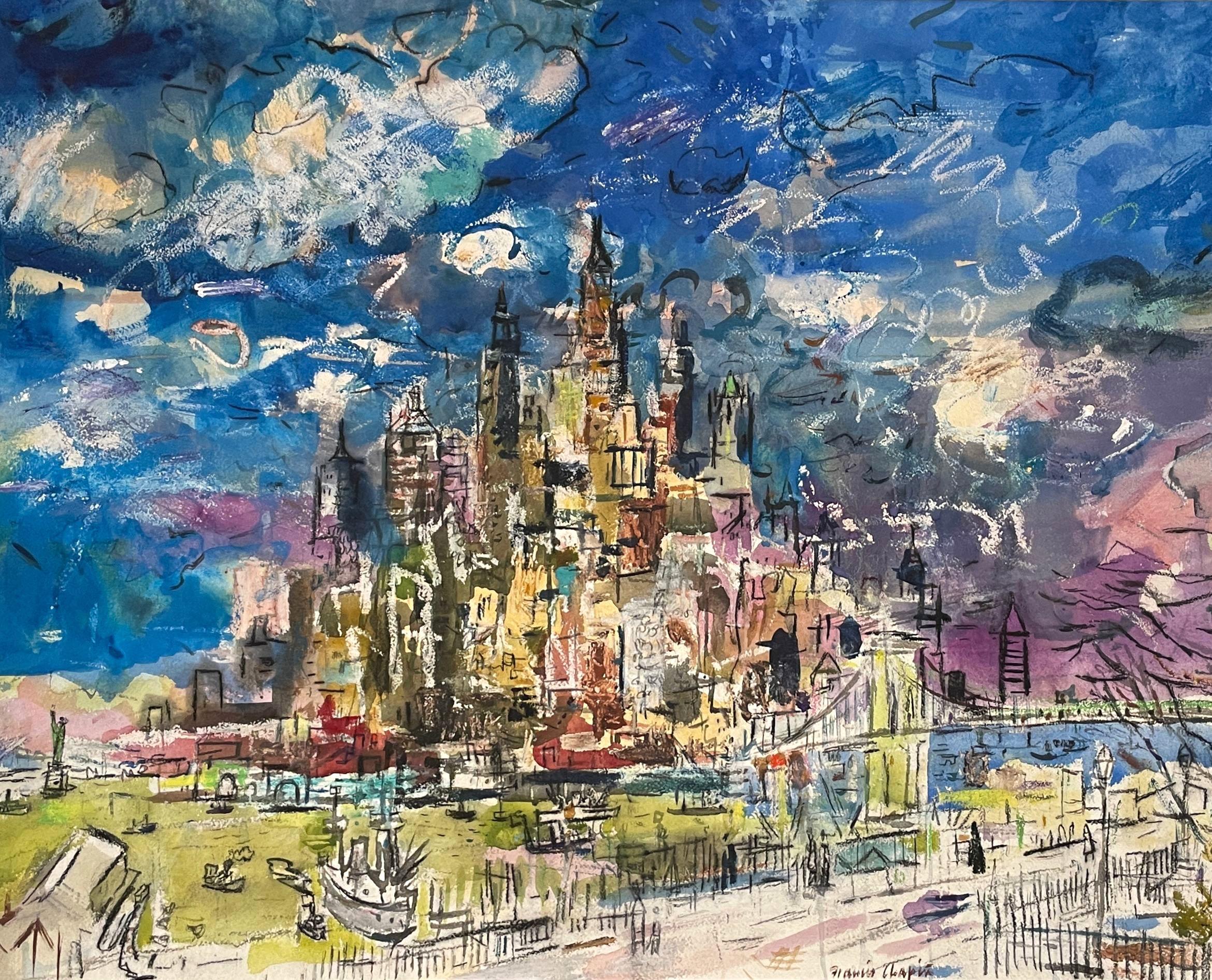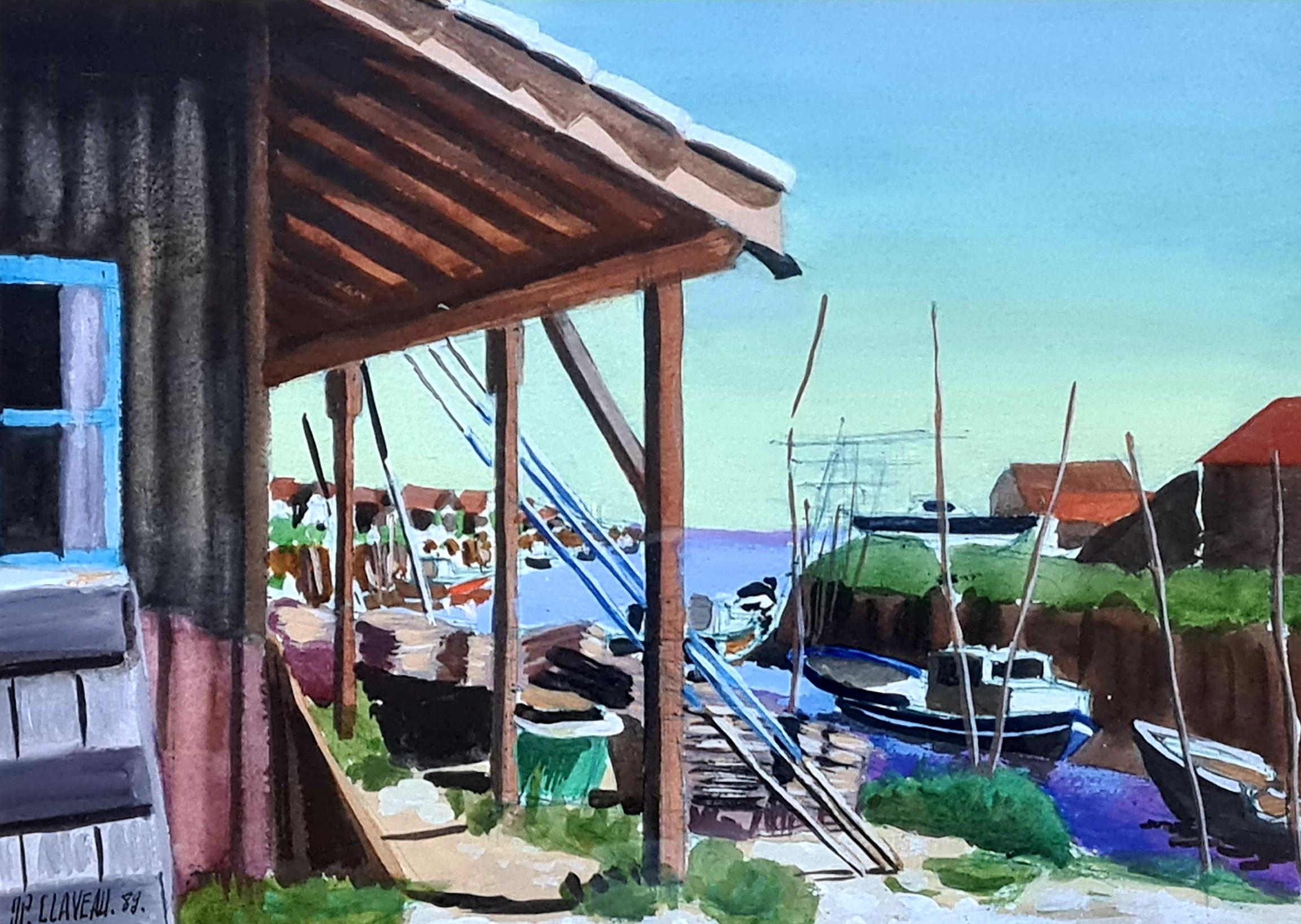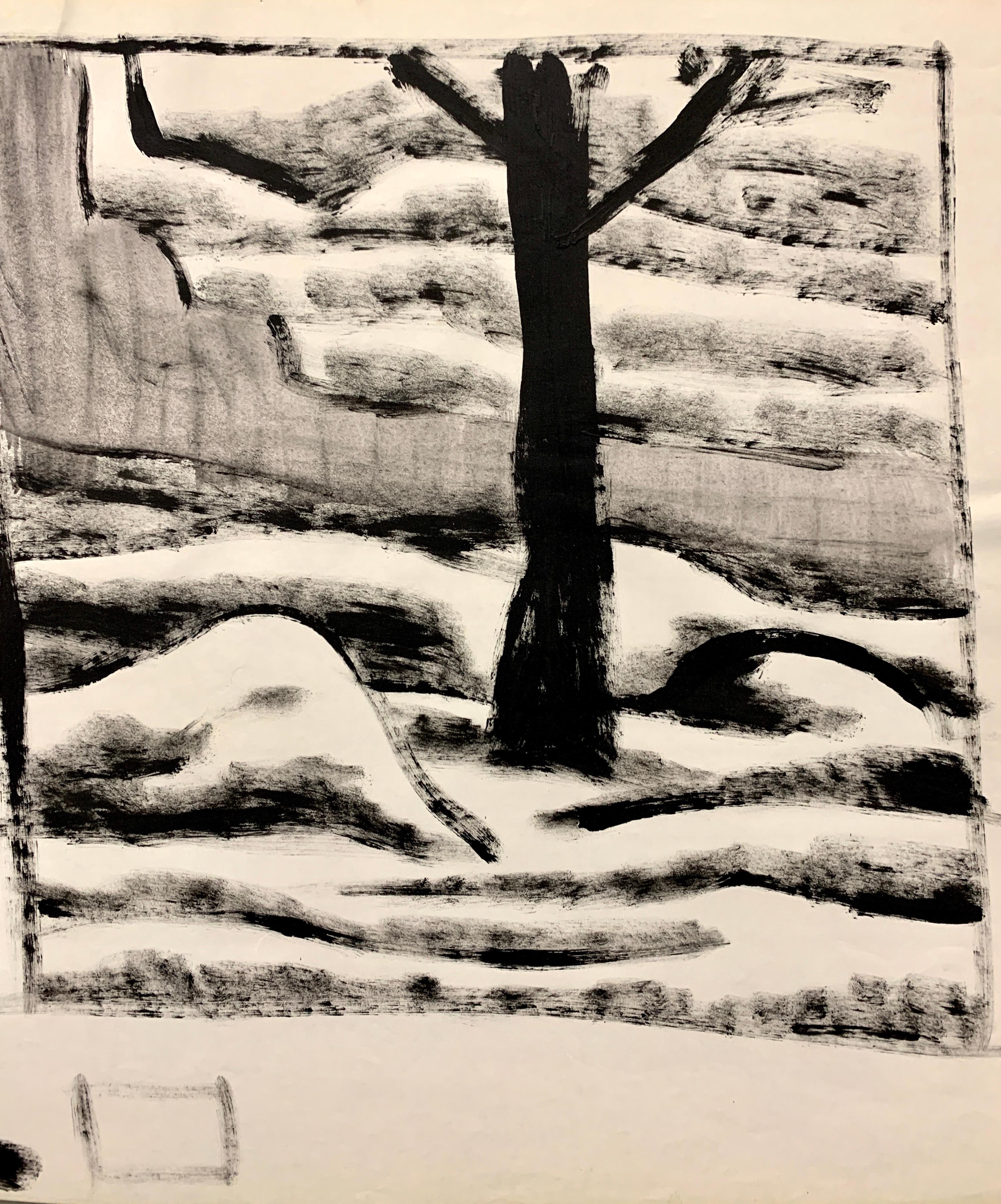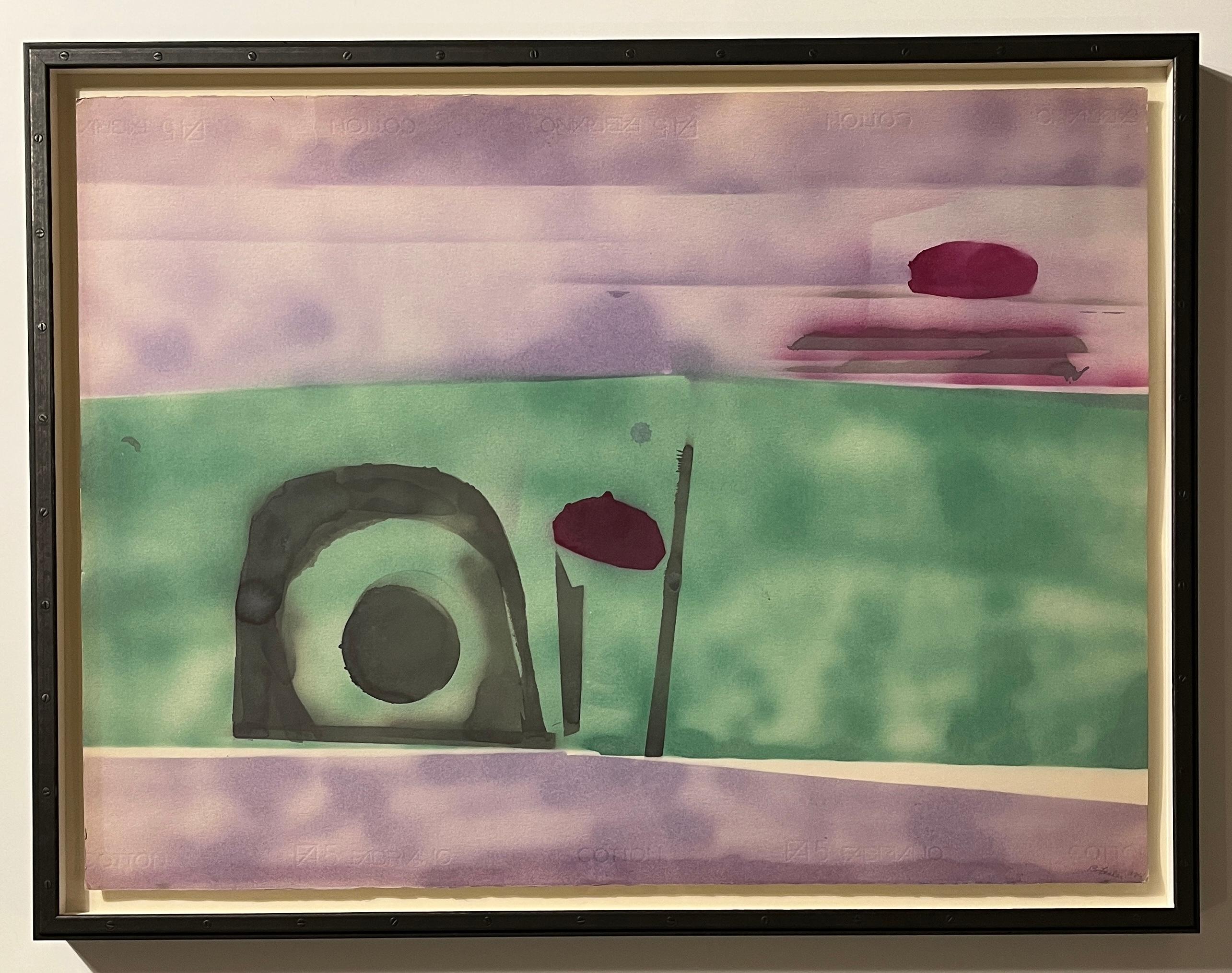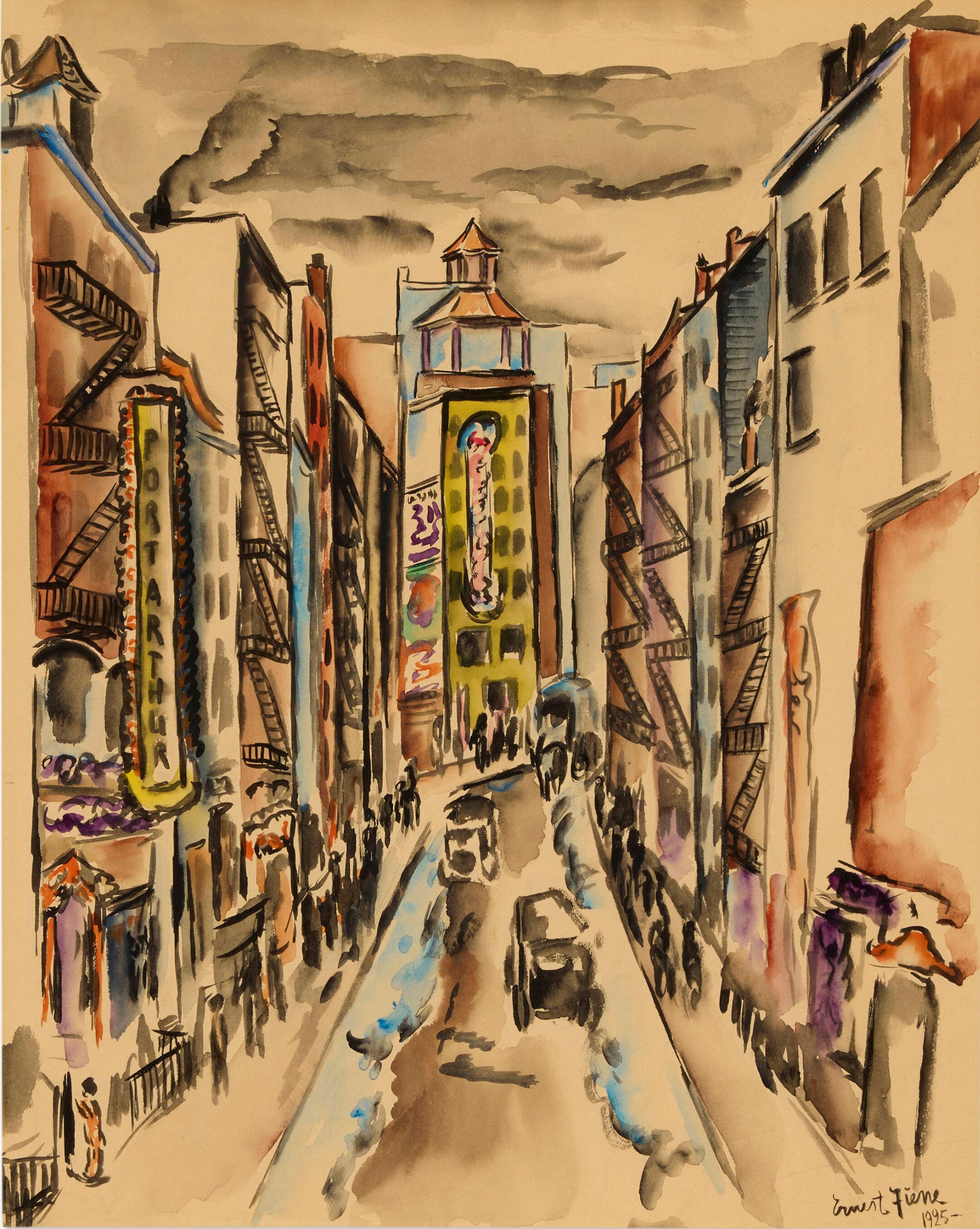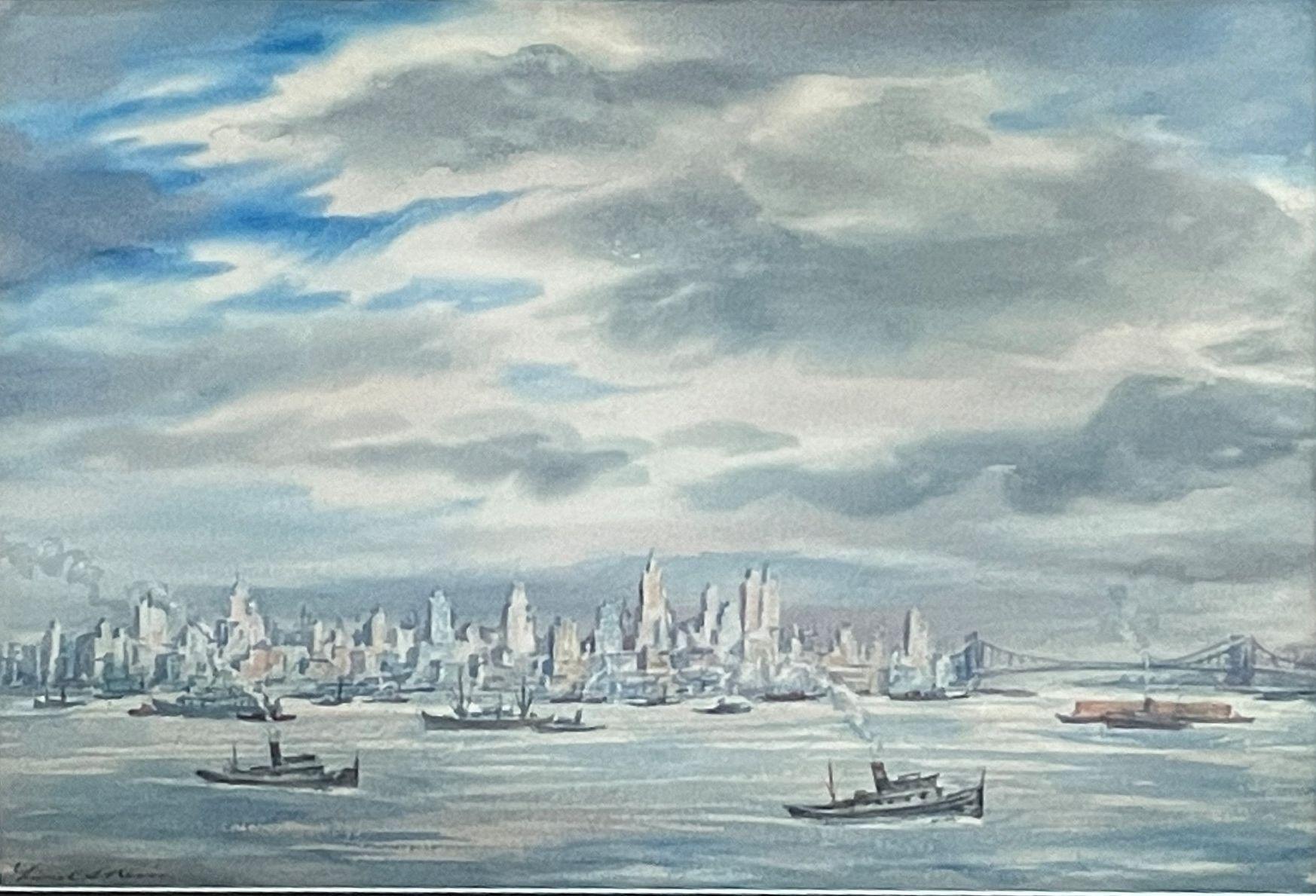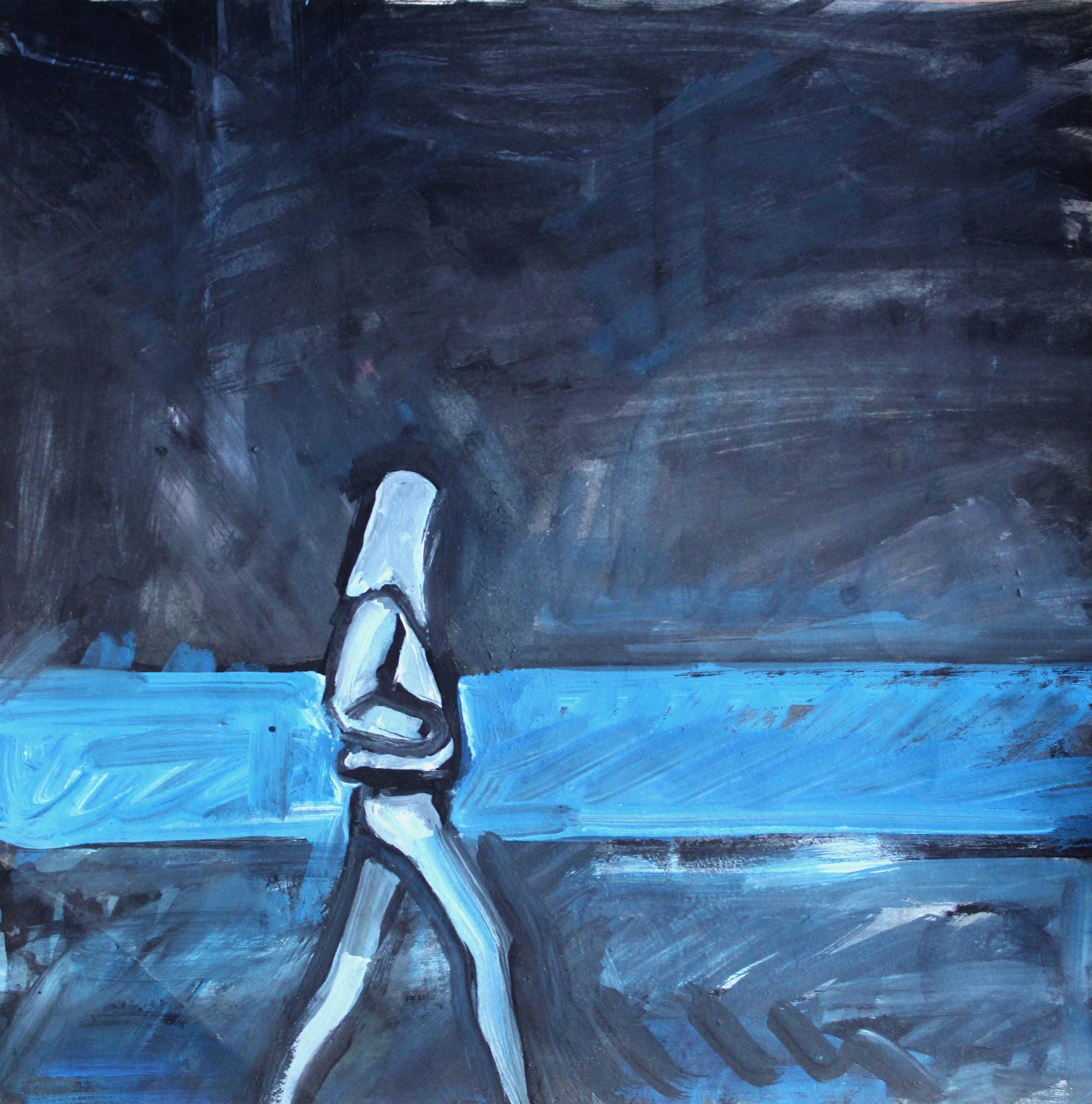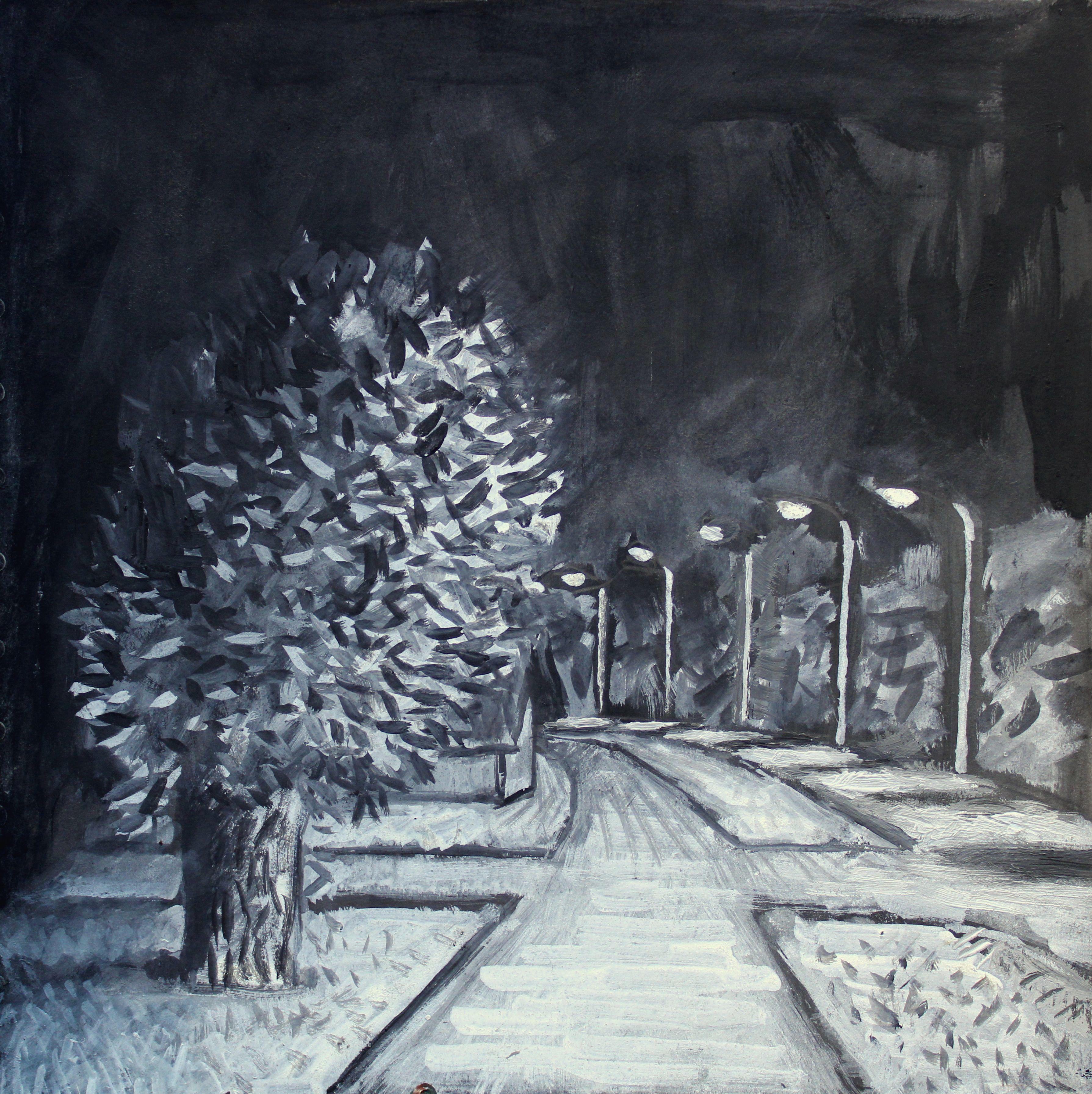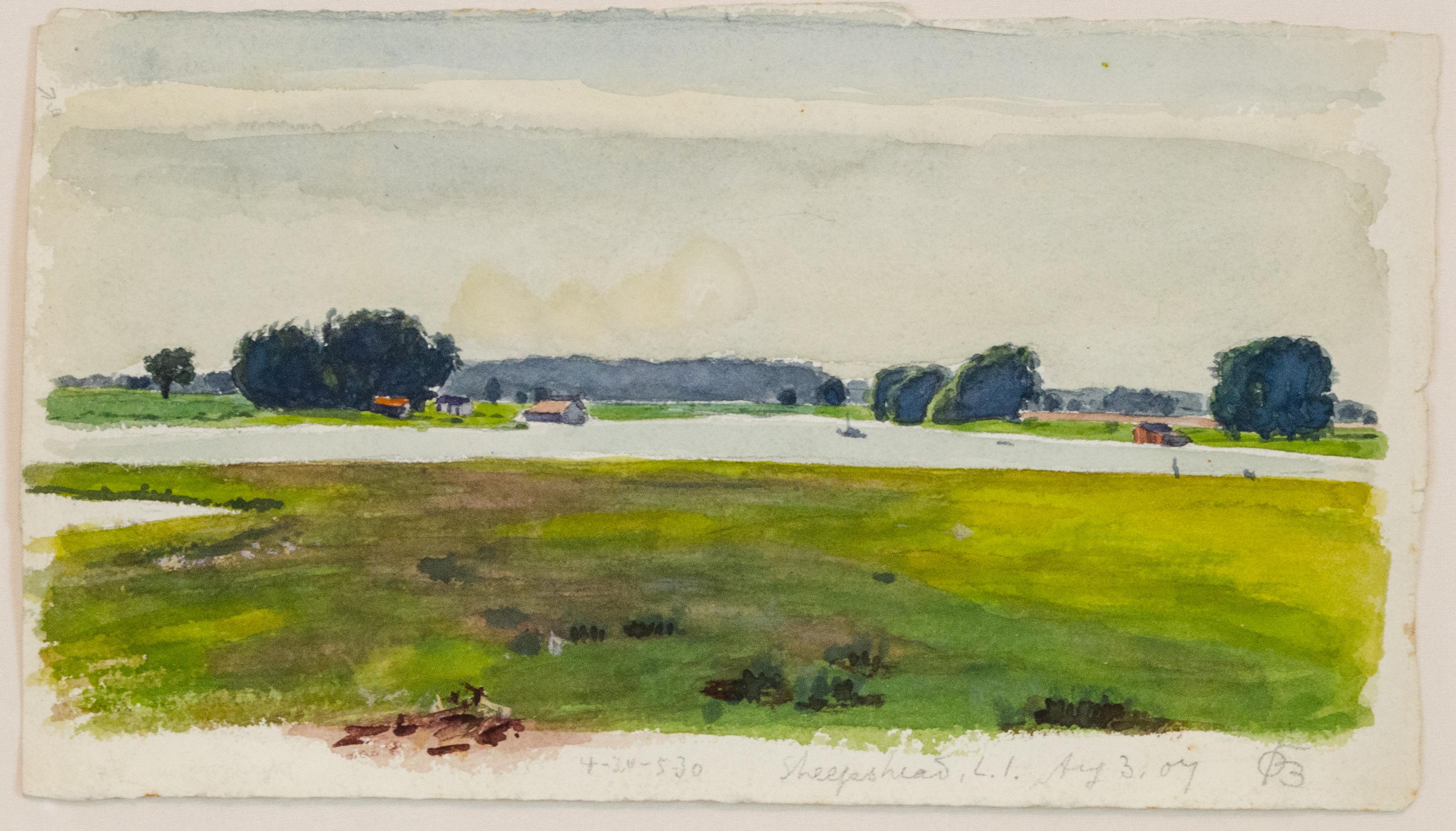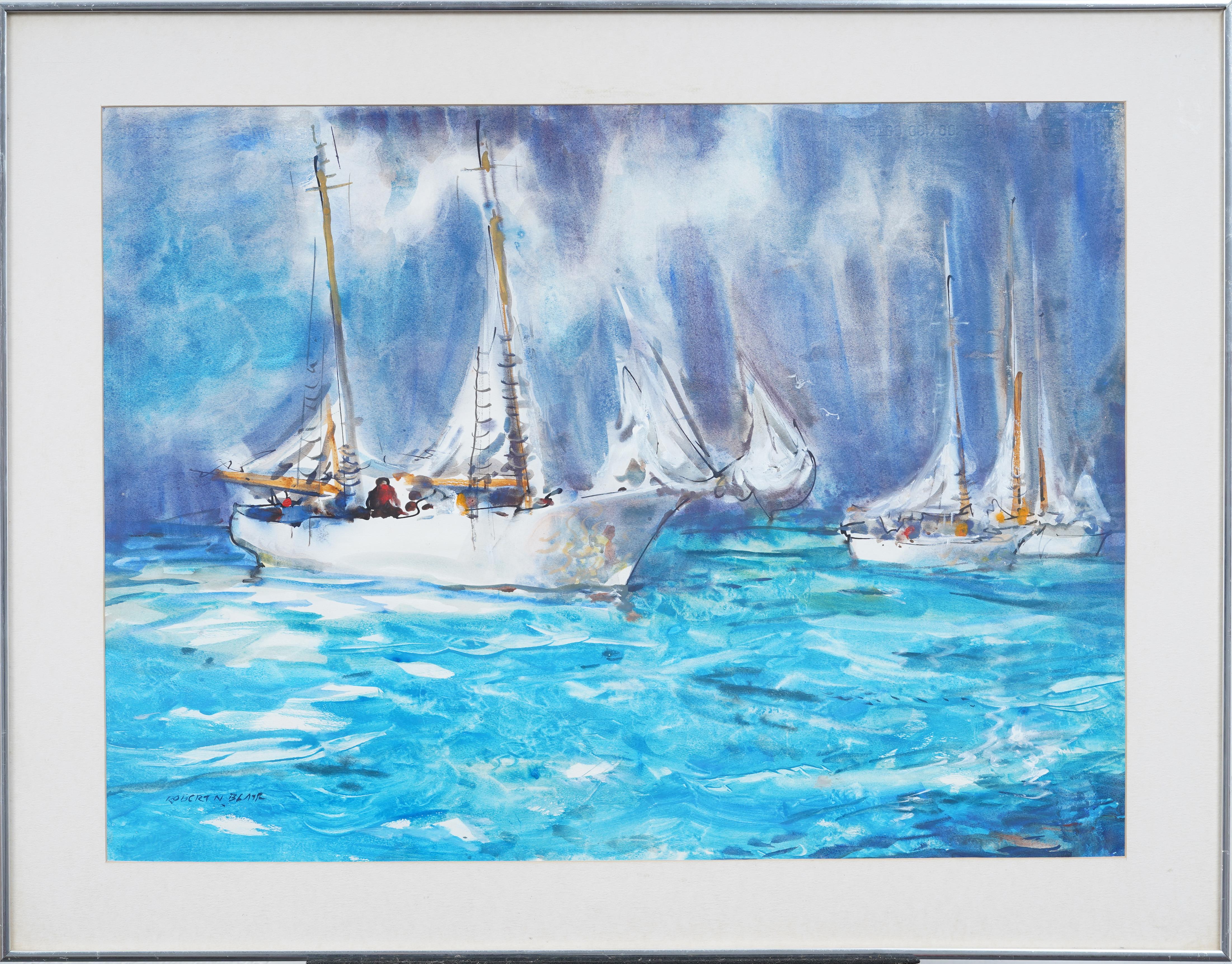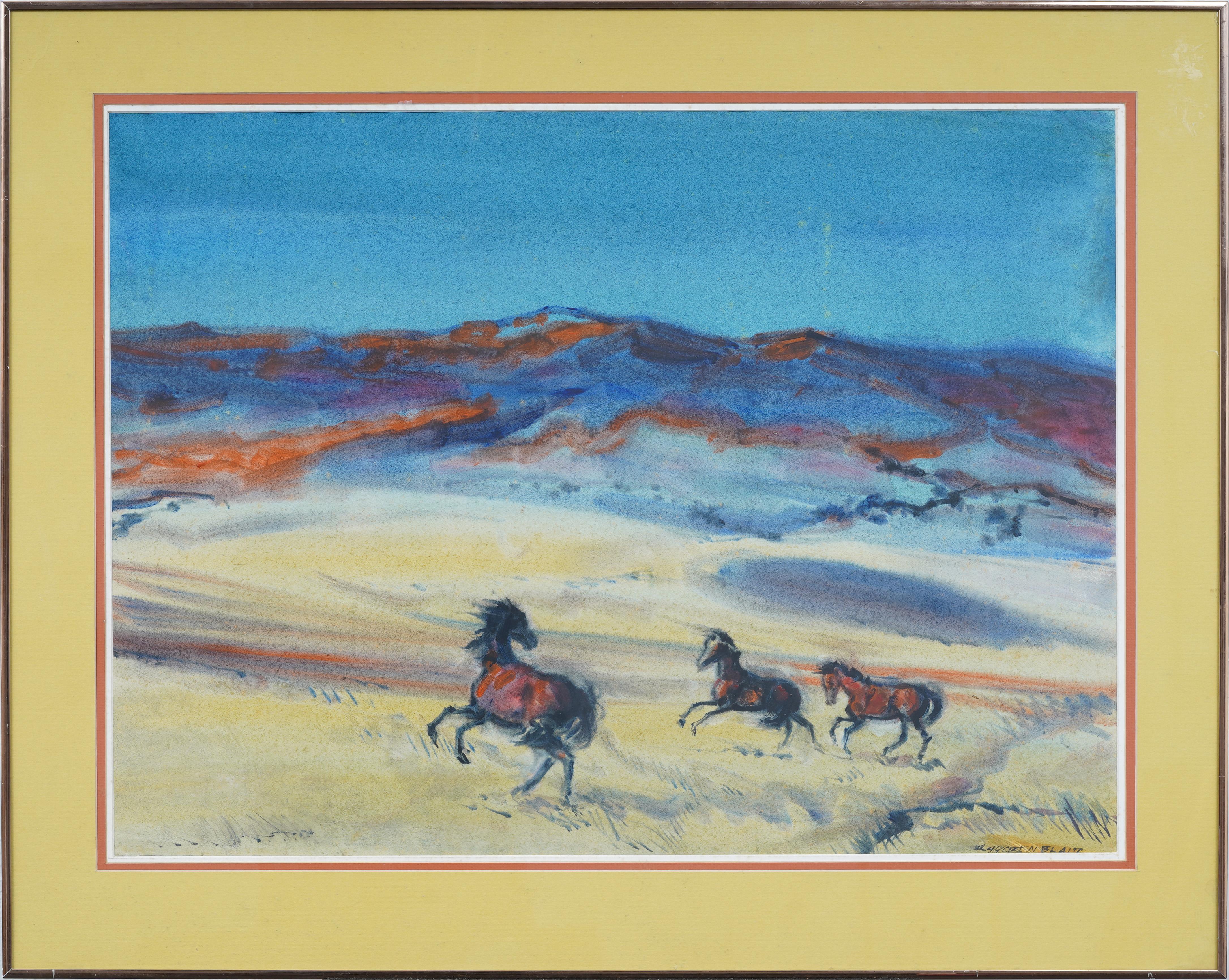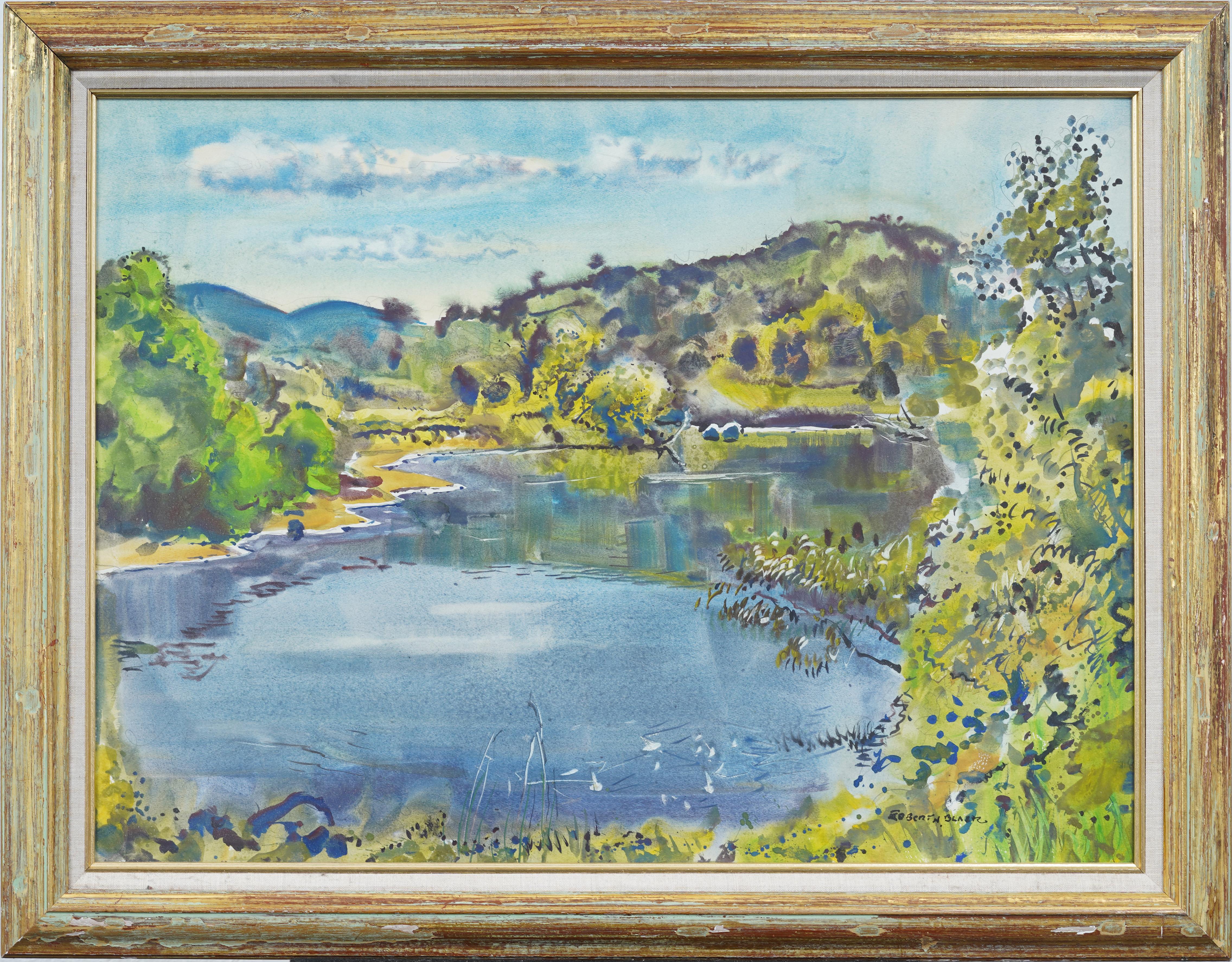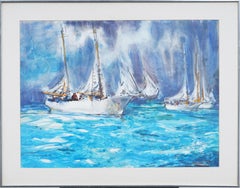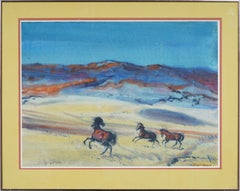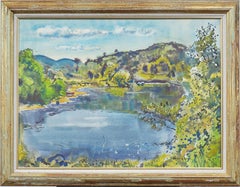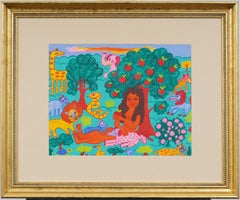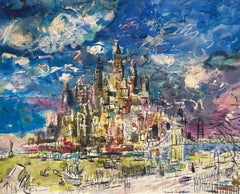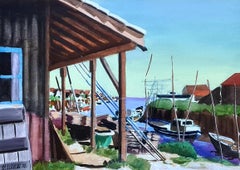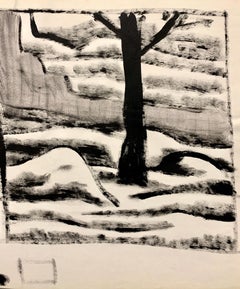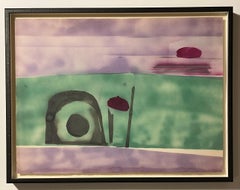Fishing in Solitude
Want more images or videos?
Request additional images or videos from the seller
1 of 5
Robert Noel BlairFishing in Solitude1950
1950
Price:$2,800
About the Item
- Creator:Robert Noel Blair (1912 - 2003, American)
- Creation Year:1950
- Dimensions:Height: 22 in (55.88 cm)Width: 30 in (76.2 cm)
- Medium:
- Movement & Style:
- Period:
- Condition:
- Gallery Location:Buffalo, NY
- Reference Number:1stDibs: LU13922334011
About the Seller
4.9
Platinum Seller
Premium sellers with a 4.7+ rating and 24-hour response times
Established in 1970
1stDibs seller since 2015
2,949 sales on 1stDibs
Typical response time: 4 hours
Authenticity Guarantee
In the unlikely event there’s an issue with an item’s authenticity, contact us within 1 year for a full refund. DetailsMoney-Back Guarantee
If your item is not as described, is damaged in transit, or does not arrive, contact us within 7 days for a full refund. Details24-Hour Cancellation
You have a 24-hour grace period in which to reconsider your purchase, with no questions asked.Vetted Professional Sellers
Our world-class sellers must adhere to strict standards for service and quality, maintaining the integrity of our listings.Price-Match Guarantee
If you find that a seller listed the same item for a lower price elsewhere, we’ll match it.Trusted Global Delivery
Our best-in-class carrier network provides specialized shipping options worldwide, including custom delivery.More From This Seller
View AllAntique American Modernist Abstract Framed Lake Erie Summer Seascape Painting
Located in Buffalo, NY
Very finely painted modernist landscape by Robert Noel Blair (1912 - 2002). Watercolor and gouache on paper. Signed Image size, 22 by 29 inches. In excellent original condition. ...
Category
1950s Modern Abstract Paintings
Materials
Watercolor, Archival Paper
Antique American Modernist Wild Horses Western Landscape Watercolor Painting
Located in Buffalo, NY
Very finely painted modernist landscape by Robert Noel Blair (1912 - 2002). Watercolor and gouache on paper. Signed Image size, 22 by 30 inches. In excellent original condition. ...
Category
1950s Modern Abstract Paintings
Materials
Watercolor, Archival Paper
Antique American Modernist Abstract Framed Landscape Watercolor Painting
Located in Buffalo, NY
Very finely painted modernist landscape by Robert Noel Blair (1912 - 2002). Watercolor and gouache on paper. Signed Image size, 23 by 31 inches. In excellent original condition. ...
Category
1950s Modern Abstract Paintings
Materials
Watercolor, Archival Paper
$1,340 Sale Price
20% Off
Antique Israeli American Folk Art Modernist Figural Landscape Framed Painting
Located in Buffalo, NY
Antique Israeli American modernist folk art landscape by Malcah Zeldis. Mixed media painting on paper. Framed. Signed. Measuring 18 by 22 inches overall and 11 by 14 painting alone....
Category
1960s Modern Abstract Paintings
Materials
Board, Watercolor, Archival Paper
Landscape
By Wes Olmsted
Located in Buffalo, NY
An original watercolor painting by Westley "Wes" Olmsted. This work is currently featured in the exhibition Man of Extremes at Benjaman Gallery in Buffalo, NY.
Westley G. Olmsted ...
Category
1970s Modern Landscape Paintings
Materials
Gold Leaf
Mountain Night
By Wes Olmsted
Located in Buffalo, NY
An original mixed media (Watercolor and india ink) on paper depicting a mountain range at night.
Category
1970s Modern Landscape Paintings
Materials
Archival Paper, India Ink, Watercolor
You May Also Like
A Dynamic Mid-Century Modern Manhattan Scene, New York City by Francis Chapin
By Francis Chapin
Located in Chicago, IL
A Large, Dynamic 1950s Mid-Century Modern Watercolor of Lower Manhattan, New York City by Noted Chicago Artist, Francis Chapin (Am. 1899-1965). The image is watercolor, pastel and c...
Category
Mid-20th Century American Modern Landscape Paintings
Materials
Watercolor, Archival Paper, Charcoal, Pastel
Boats in Harbour, Looking out to the Sea, Colourful French Watercolour, The Port
Located in Cotignac, FR
Watercolour view of boats in a port, looking out to sea, by French Painter Jean-Paul Claveau. The painting is signed and dated bottom left and presented in painted wood frame, with c...
Category
Late 20th Century Modern Landscape Drawings and Watercolors
Materials
Paper, Watercolor
1950s "Mound Street" Mid Century Figurative Painting American Modernist
By Donald Stacy
Located in Arp, TX
Donald Stacy
"Mound Street"
c. 1950s
Gouache paint on paper
24" x 18'" unframed
Unsigned
Came from artist's estate
For sale is a striking black and white painting titled "Mound Stre...
Category
Mid-20th Century American Modern Abstract Paintings
Materials
Paper, Gouache
1950s "Purple Sky Landscape" Mid Century Abstract Landscape Painting
By Donald Stacy
Located in Arp, TX
Bearnice Fisher
"Purple Sky Landscape"
1978
Gouache on paper
30" x 22.5" unframed
Signed and dated lower right in pencil
Bearnice Fisher lived and worked in NYC
Category
Mid-20th Century American Modern Landscape Paintings
Materials
Paper, Gouache
"China Town" Ernest Fiene, 1925 Modernist Watercolor on Paper Chinatown Scene
By Ernest Fiene
Located in New York, NY
Ernest Fiene
China Town, 1925
Signed and dated to lower right ‘Ernest Fiene 1925’.
Watercolor on paper
18 1/2 x 14 5/8 inches
Ernest Fiene was born in Elberfeld, Germany in 1894. As a teenager, Fiene immigrated to the United States in 1912. He studied art at the National Academy of Design in New York City from 1914 to 1918, taking day classes with Thomas Maynard and evening classes with Leon Kroll. Fiene continued his studies at the Beaux-Arts Institute of Design in New York from 1916 to 1918, adding classes in printmaking at the Art Students League in 1923.
Fiene began his career as an artist in 1919 with his first exhibition of watercolors at the MacDowell Club arranged by his mentor Robert Henri. In 1923 the Whitney Studio Club mounted a large exhibition of his works. The following year he had an exhibition at the New Gallery in New York, which completely sold out all fifty-two works, including paintings, watercolors, drawings, and etchings. With the proceeds of sales from the New Gallery exhibition, Ernest Fiene and his younger brother Paul, a sculptor, built studios in Woodstock, New York in 1925.
In the early Twenties Ernest Fiene painted mostly landscapes of Woodstock and both the Ramapo and Hudson River Valleys. The first monograph from the Younger Artists Series was published on Fiene in 1922. Published in Woodstock, the series went on to include Alexander Brook, Peggy Bacon, and Yasuo Kuniyoshi. The book reproduced 1 illustration in color and another 27 reproductions in black and white. Around 1925 Fiene became fascinated with the intensity, excitement, and opportunities for color harmonies New York City offered as a subject. His paintings shifted to urban and industrial themes with architecture, industry, and transportation becoming his subjects.
By 1926 Fiene had attracted the dealer Frank K.M. Rehn, who gave him a one-man exhibition that year, which travelled to the Boston Arts Club. C.W. Kraushaar Galleries gave Fiene a one-man exhibition of urban, landscape, portrait, and still life paintings in 1927. Julianna Force, the director of the Whitney Studio Club and first director of the Whitney Museum of American Art, included two of Fiene’s paintings in a fall exhibition in 1928. The Whitney Studio Club showed Fiene’s paintings in a two-man exhibition with Glenn O. Coleman that year and acquired three of Fiene’s paintings. Also in 1928 Fiene became affiliated with Edith Halpert’s Downtown Gallery where he had an exhibition of 20 lithographs in the spring. Fiene sold his house in Woodstock in 1928 to spend more of his time in New York City.
With so many successful exhibitions, Fiene returned to Paris in 1928-29 where he rented Jules Pascin's studio and studied at the Académie de la Grande Chaumière. In France, Fiene painted both landscape and urban subjects developed from ideas influenced by Cubist geometry and the use of flat areas of broad color. Upon returning to New York in 1930, Fiene used this new approach to continue to paint New York skyscraper and waterfront subjects, as well as to begin a series of paintings on changing old New York based on the excavations for Radio City Music Hall and the construction of the Empire State Building. Frank K.M. Rehn Galleries exhibited this series, titled “Changing Old New York,” in 1931. Fiene also has solo exhibitions at Rehn Galleries in 1930 and 1932. Fiene’s oil paintings are exhibited at the Chicago Arts Club in 1930 as well.
Fiene was included in the Museum of Modern Art’s exhibition Painting and Sculpture by Living Americans in December of 1931. Visiting New York, Henri Matisse saw the exhibition and called Fiene’s Razing Buildings, West 49th Street the finest painting he had seen in New York. Fiene had two mural studies from his Mechanical Progress series exhibited at the Museum of Modern Art’s exhibition Murals by American Painters and Photographers in 1932. Fiene sent View from my Window which depicts Fiene working on a lithograph stone while looking out his window to the newly completed Empire State Building to the Carnegie International in 1931. In 1932 Fiene participated in the first Biennial of American Painting at the Whitney Museum and his prints were included in exhibitions at the Downtown Gallery and the Wehye Gallery. In the same year, Fiene was awarded a Guggenheim fellowship to further study mural painting in Florence, Italy.
On his return from Italy in 1933 Fiene re-engaged himself in New York City life and won several public and private mural projects. Fiene resumed his active exhibition schedule, participating in two group exhibitions at the Whitney Museum and a one-man exhibition of recent paintings at the Downtown Gallery in January 1934. In 1933 he purchased a farm in Southbury, Connecticut, which added Connecticut scenes to his landscape subjects. This was also the year Fiene began to spend summers on Monhegan Island, Maine, where he painted seascapes, harbor scenes, and still lifes.
Fiene’s landscape paintings attracted numerous commissions as part of the American Scene movement. Through the fall and winter of 1935-36, Fiene took an extended sketching trip through the urban, industrial, and farming areas of Pennsylvania and West Virginia. Most of the twenty-four Pennsylvania urban and rural paintings from this trip were featured in an exhibition held at the First National Bank in Pittsburgh in October of 1937 by the Pittsburgh Commission for Industrial Expansion. Fiene said of these works that he formed rhythm, opportunity for space and color, and integrity in the Pennsylvania mill and furnace paintings. Fiene received the silver medal for one of the Pittsburgh paintings...
Category
1920s Modern Figurative Paintings
Materials
Paper, Watercolor
"New York City Skyline View from the East River, " Lionel Reiss, Jewish Artist
By Lionel Reiss
Located in New York, NY
Lionel S. Reiss (1894 - 1988)
New York City Skyline View from the East River
Watercolor on paper
13 x 19 inches
Signed lower left
In describing his own style, Lionel Reiss wrote, “By nature, inclination, and training, I have long since recognized the fact that...I belong to the category of those who can only gladly affirm the reality of the world I live in.” Reiss’s subject matter was wide-ranging, including gritty New York scenes, landscapes of bucolic Bucks County, Pennsylvania, and seascapes around Gloucester, Massachusetts. However, it was as a painter of Jewish life—both in Israel and in Europe before World War II—that Reiss excelled. I.B. Singer, the Nobel Prize winner for Literature, noted that Reiss was “essentially an artist of the nineteenth century, and because of this he had the power and the courage to tell visually the story of a people.”
Although Reiss was born in Jaroslaw, Poland, his family immigrated to the United States in 1898 when he was four years old. Reiss's family settled on New York City’s Lower East Side and he lived in the city for most of his life. Reiss attended the Art Students League and then worked as a commercial artist for newspapers and publishers. As art director for Metro-Goldwyn-Mayer, he supposedly created the studio’s famous lion logo.
After World War I, Reiss became fascinated with Jewish life in the ‘Old World.’ In 1921 he left his advertising work and spent the next ten years traveling in Europe, the Middle East, and North Africa. Like noted Jewish photographers Alter Kacyzne and Roman Vishniac, Reiss depicted Jewish life in Poland prior to World War II. He later wrote, “My trip encompassed three main objectives: to make ethnic studies of Jewish types wherever I traveled; to paint and draw Jewish life, as I saw it and felt it, in all aspects; and to round out my work in Israel.”
In Europe, Reiss recorded quotidian scenes in a variety of media and different settings such as Paris, Amsterdam, the Venice ghetto, the Jewish cemetery in Prague, and an array of shops, synagogues, streets, and marketplaces in the Jewish quarters of Warsaw, Lodz, Krakow, Lublin, Vilna, Ternopil, and Kovno. He paid great attention to details of dress, hair, and facial features, and his work became noted for its descriptive quality.
A selection of Reiss’s portraits appeared in 1938 in his book My Models Were Jews. In this book, published on the eve of the Holocaust, Reiss argued that there was “no such thing as a ‘Jewish race’.” Instead, he claimed that the Jewish people were a cultural group with a great deal of diversity within and between Jewish communities around the world. Franz Boas...
Category
1940s American Modern Landscape Drawings and Watercolors
Materials
Paper, Watercolor
$2,800 Sale Price
20% Off
